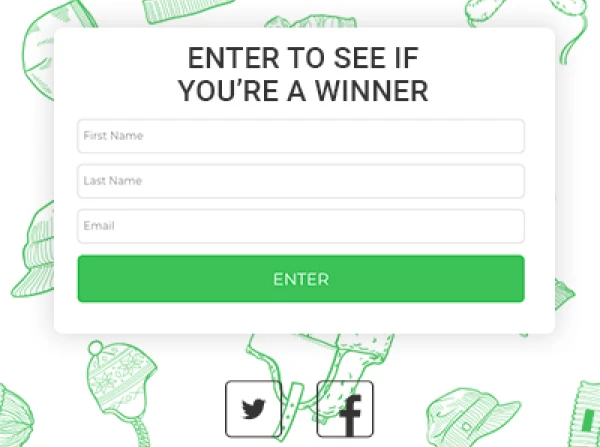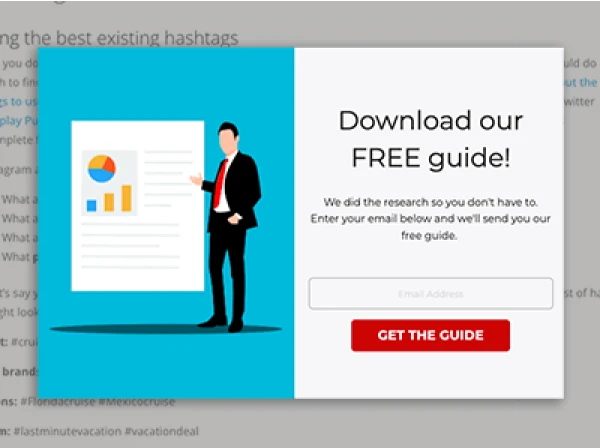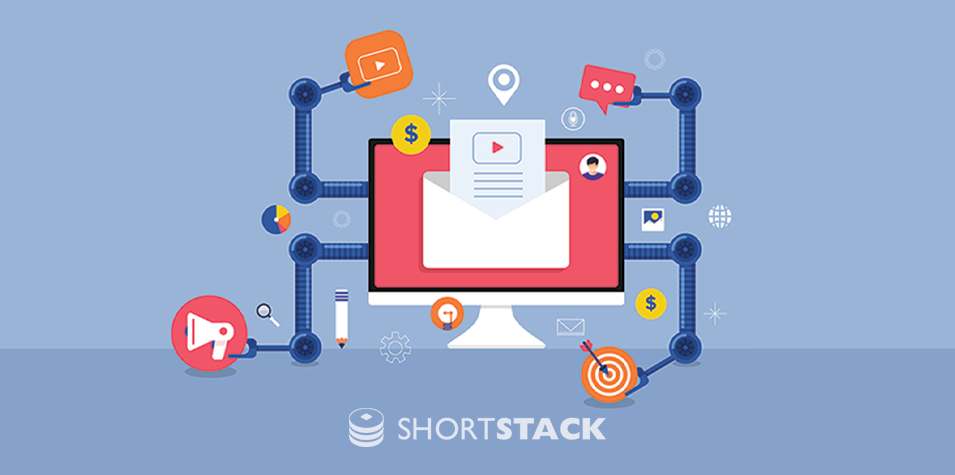Are we too obsessed with vanity metrics?Likes, comments, and followers on social media make for ego-stroking viewing, but do they do anything for the progression of your business?You get it, I’m about to tell you how important email marketing is when compared with social media. You’ve heard it a million times now. But yet, brands still get roped into the fanfare…
That’s why it’s important to take a moment to step back and look at the reality of things.
Don’t get me wrong, I’m not telling you to forget about organic social media altogether. It is a powerful channel for amplifying your message, increasing top-of-mind awareness, and expanding your reach. But when it comes to the hard stuff - lead generation, revenue generation, and customer profiling - email marketing wins in Round 1.So, there’s a place for both of these channels in your marketing mix. But for those looking to really focus in on those aforementioned hard metrics of their business, here are five reasons growing an email marketing list is a better approach than a social media following.
1. Email focuses on MOFU and BOFU content
Organic social media and the growing of a following is very much a top-of-the-funnel (TOFU) activity. You are building brand awareness with new prospects and starting the process of establishing a trusting relationship.TOFU content which is interesting to your target audience but not related to your product or service is a perfect fit for social media. People don’t want to be sold to as they are scrolling through their Facebook feed or looking for photo inspiration on Instagram.Below is a good example of TOFU content from a fishing retailer who has created a series of videos called Creek to Coast for their target audience:An example of top-of-the-funnel content on Facebook.If all you post to your social accounts are deals, offers, and hard-sell messages about your product or service, it turns people off.Now, that’s not to say that middle-of-the-funnel (MOFU) and bottom-of-the-funnel (BOFU) content such as product comparisons, case studies, and testimonials should never be used on social media. Of course, there is a time and place for this too. Especially if you are running paid advertising campaigns. But they should form only a small fraction (less than 20%) of your social media content strategy.With email marketing, things are a little different. By acquiring someone’s email address you have already established a base level of trust and credibility. They may have discovered your business on social media, come to your website after a recommendation, or found you via a search engine, and have chosen to provide you with their contact details.Once a prospect joins your email list you then have “permission” to send them MOFU and BOFU content that will more likely lead to sales. Yes, you have legal permission to do so once they have opted in. But also because you have earned a level of credibility and trust at this stage, you’ve made these people more open to sales-driven copy.Here is a BOFU email with a promised discount:

An example of a bottom-of-the-funnel email campaign.
2. Consumers prefer email as a communication channel
Interestingly, a study by Campaign Monitor found that consumers prefer to receive email communications from brands when compared to other channels, such as direct mail, mobile apps, social media, push notifications, and mobile wallet. In fact, this was the case across multiple industry sectors, including Retail, Travel & Hospitality, Entertainment, Nonprofit, and Digital Media. See below a graph of the preferences for Retail:

Data on consumer communication preferences.The same study found that the top two reasons consumers open emails are due to either personalization or the promise of a discount:

Data on why people open emails.These statistics merely reinforce the fact that email is more relevant than social media for MOFU and BOFU content. Your customers expect personalization which means they have willingly given you their information and trust you to use it. They are also looking out for deals or discounts in their inbox - they’re ready to buy.The last thing they want is to be interrupted with a hard-sell on social media when they are watching a cat GIF or giggling at the latest meme about the Kardashians.
3. With email, you own your database
It’s been said before and I’m sure it will be said again - you don’t own your social media audience!Sorry to sound like a broken record, but it’s way too easy to get swept up in the perceivably huge opportunity of growing a social media following.At one point in time, this was a great strategy. Increasing your likes on Facebook or ramping up your Twitter followers would result in increased exposure, engagement, traffic, and eventually sales for your business. Facebook changed all of this with a number of consistent tweaks to their algorithm.Organic reach for Facebook Pages started to decline… Twitter engagement fell off a cliff… and other social networks weren’t providing adequate market saturation of these platforms.

Businesses panicked. A huge number of businesses had built their entire growth strategy on the back of Facebook Page likes, and all of a sudden none of these people were seeing their posts. Facebook wanted them to pay.So even with new and unique ways of engaging with your audience on these platforms, such as Groups and Messenger, you will never be immune to an algorithm change.On the flip side, once someone signs up for your email list - until they decide to unsubscribe - you have their contact information and are free to communicate with them in the comfort of their inbox. No other big corporations have control of that ecosystem - only you.The icing on the cake? Email is not going anywhere soon with over 50% of people opening their personal email account 10 times a day! We are addicted.
4. Email list segmentation drives personal experiences
Perhaps the most powerful aspect of email marketing, when compared to organic social media, is the ability to segment your audience. If you’re smart about it and have the right tools, you’ll never have to send an email to a generic audience again. Instead, you can deliver highly relevant content to prospects based on their preferences and behavior.A study by Lyris found that email list segmentation increased open rates, provided more relevance to prospects, decreased unsubscribe rates, as well as a number of other benefits for businesses:

Data on the benefits of email list segmentation.Email list segmentation comes in many forms, but here are some of the most powerful segments you can create for sending personalized campaigns:
- Demographics - such as geography, sex, age, and other factors.
- On-site behavior - split up your list based on key pages they have (or haven’t) visited on your website.
- Purchase history - segment your list based on the products they have purchased in the past.
- Activity and engagement - identify which people on your list have been most engaged with your campaigns, or perhaps those that have dropped off.
5. Email has powerful testing capabilities
At its core, marketing and business growth is just a series of tests. You try something to see how it works, improve, iterate, and try something else. Some things don’t work, and other things catch fire.

Tests can be both big and small. Whether you are launching a new product to the market or split testing the color of a button on your website, marketing tests are a meaningful way of improving the performance of your marketing activity.Email marketing, unlike organic social media, enables you to test and iterate with accuracy. You can test subject lines, calls-to-action, offers, or any number of other variants to see which one resonates most with your audience.For example, you could isolate a small subsection of your email list and split it into two groups. When sending your campaign to these subsections, test one variant and determine which metric will determine its success. Is it about open rates? Clicks? Or maybe it’s about sales?Let the dust settle for a few days and take a look at the results of your micro-test. Which variant came out on top? Now, you can either run a new test with a different subsection, or you can roll out the best performing campaign to the rest of your list.
Conclusion
It’s an ongoing battle that both sides will likely never win - email vs social media.In today’s digital world, the reality is that you need both of these channels in your marketing strategy. When in sync, social media and email marketing can form a mighty combination.But when it comes to revenue generating activities and profitable growth, it’s hard to deny email marketing as the channel of choice. Email has a compelling advantage over social media when it comes to consumer preferences for brand communication - not to mention the functionality email software provides from an automation, segmentation, and testing standpoint.No doubt the game will change again in the near future, but for now, email marketing is critical.
Try a ShortStack template to create your first contest fast and easily.
Get Started Today. No credit card required. Risk-free.
About the author
Will Blunt is the founder of Sidekick Digital by Will Blunt - B2B Marketing Expert - Sidekick Digital, a publishing business that launches, manages, and grows brands with content marketing.
Recent posts
Go back to blogGet marketing tips straight to your inbox
Launch an irresistible giveaway. Get started for free.
Join 630.000+ marketers that are boosting engagement and sales.













